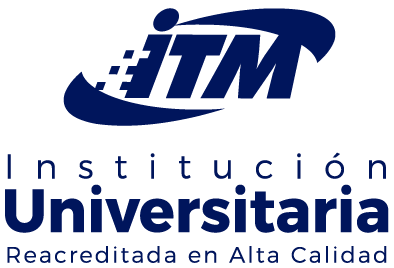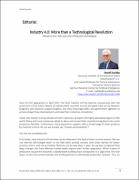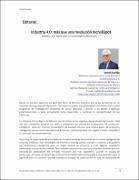| dc.contributor.author | Zuehlke, Detlef | |
| dc.date.accessioned | 2019-10-24T15:25:36Z | |
| dc.date.accessioned | 2019-10-24T16:52:38Z | |
| dc.date.available | 2019-10-24T15:25:36Z | |
| dc.date.available | 2019-10-24T16:52:38Z | |
| dc.date.issued | 2019-07-30 | |
| dc.identifier | https://revistas.itm.edu.co/index.php/revista-cea/article/view/1438 | |
| dc.identifier | 10.22430/24223182.1438 | |
| dc.identifier.uri | http://hdl.handle.net/20.500.12622/1410 | |
| dc.description.abstract | Desde su aparición en abril de 2011, el término Industria 4.0 se ha convertido en un sinónimo de la producción del futuro. Casi todos los países industrializados alrededor del mundo han creado programas de investigación y proyectos de apoyo industrial y animan a las pymes y entidades estatales a dar forma a tales desarrollos activamente y mantener sus industrias en un nivel competitivo. Hoy, la Industria 4.0 ya llegó a las fábricas, por lo menos en regiones altamente desarrolladas del mundo. Sin embargo, la mayoría de las actividades de la Industria 4.0 se pueden observar en el campo de los sistemas de control inteligente. Nuevas tecnologías aparecen cada vez más rápido y encuentran su aplicación en ambientes de producción. La Ethernet TSN/SDN ofrecerá un estándar de comunicación en internet completo y compatible con capacidades en tiempo real. A pesar de esto, los protocolos para su aplicación e interoperabilidad todavía son un trabajo en progreso; llamados Asset Administration Shells en inglés, estos definen un conjunto de estándares de comunicación y servicios para conectar fácilmente un dispositivo de cualquier proveedor en el mundo a una red de una fábrica. En conclusión, los países industrializados no solo son proveedores de tecnologías al resto del mundo, también deben aceptar su responsabilidad en ayudar a las regiones menos industrializadas a encontrar e implementar sus futuros modelos de negocio en un mundo interconectado. | spa |
| dc.format.mimetype | application/pdf | |
| dc.language.iso | eng | |
| dc.language.iso | spa | |
| dc.publisher | Instituto Tecnológico Metropolitano - ITM | spa |
| dc.relation | https://revistas.itm.edu.co/index.php/revista-cea/article/view/1438/1294 | |
| dc.relation | https://revistas.itm.edu.co/index.php/revista-cea/article/view/1438/1295 | |
| dc.rights | Derechos de autor 2019 Instituto Tecnológico Metropolitano | spa |
| dc.rights | https://creativecommons.org/licenses/by-nc-sa/4.0/ | spa |
| dc.source | 2422-3182 | |
| dc.source | 2390-0725 | |
| dc.source | Revista CEA; Vol 5 No 10 (2019); 9-10 | eng |
| dc.source | Revista CEA; Vol. 5 Núm. 10 (2019); 9-10 | spa |
| dc.subject | industria 4.0 | spa |
| dc.title | Industria 4.0: más que una revolución tecnológica | spa |
| dc.title.alternative | Industry 4.0: More than a Technological Revolution | eng |
| dc.subject.keywords | Industry 4.0 | eng |
| dc.type | info:eu-repo/semantics/article | |
| dc.type | info:eu-repo/semantics/publishedVersion | |
| dc.type | Editorial | eng |
| dc.type | Editorial | spa |
| dc.relation.ispartofjournal | Revista CEA | |
| dc.description.abstractenglish | Since its first appearance in April 2011, the term Industry 4.0 has become synonymous with the production of the future. Nearly all industrialized countries around the globe have set up research programs and industry support projects, and they encourage SMEs and government agencies to actively shape those developments and keep their industries competitive. Today, the Industry 4.0 has already arrived in factories, at least in the highly developed regions of the world. However, so far, most Industry 4.0 activities can be observed in the field of smart control systems. New technologies appear increasingly faster and find their application in production environments. TSN/SDN Ethernet will offer a complete compatible internet communication standard with real-time capabilities. Nevertheless, appropriate protocols for its application and interoperability are still a work in progress; they are called Asset Administration Shells and define a complete set of communication and service standards to easily connect any device from any supplier worldwide to a factory network. In conclusion, industrialized countries are not only suppliers of technologies to the rest of the world, they should also accept their responsibility to help less industrialized regions to find and implement their future business models in an interconnected world. | eng |
| dc.rights.accessrights | info:eu-repo/semantics/openAccess | |
| dc.type.coar | http://purl.org/coar/resource_type/c_6501 | |



